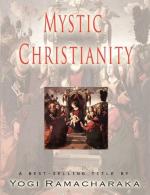“And in the sixth month the angel Gabriel was sent from God unto a city of Galilee, named Nazareth, to a virgin espoused to a man whose name was Joseph, of the house of David; and the virgin’s name was Mary. And the angel came in unto her and said, Hail, thou that art highly favored, the Lord is with thee: blessed art thou among women. And when she saw him she was troubled at his saying, and cast in her mind what manner of salutation this should be. And the angel said unto her, Fear not, Mary: for thou hast found favor with God. And, behold, thou shalt conceive in thy womb, and bring forth a son and shalt call his name JESUS. He shall be great, and shall be called the Son of the Highest; and the Lord God shall give unto him the throne of his father David. And he shall reign over the house of Jacob forever; and of his kingdom there shall be no end. Then said Mary unto the angel, How shall this be, seeing I know not a man? And the angel answered and said unto her, The Holy Ghost shall come upon thee, and the power of the Highest shall overshadow thee: therefore also that holy thing which shall be born of thee shall be called the Son of God.” (Luke 1:26-33.)
And so, this then is the commonly accepted, orthodox teachings of Christian theology. It is embodied in the two best-known creeds of the church and is made an essential article of belief by the majority of the orthodox churches.
In the Apostle’s Creed, which has been traced back to about the year A.D. 500, and which is claimed to have been based on an older creed, the doctrine is stated thusly: “... and in Jesus Christ, his only Son, our Lord, who was conceived by the Holy Ghost, born of the Virgin Mary,” etc. In the Nicene Creed, which dates from A.D. 325, the doctrine is stated thusly: “... and in one Lord Jesus Christ, the only begotten Son of God, begotten of his Father ... and was incarnate by the Holy Ghost of the Virgin Mary,” etc.
And so, the doctrine is plainly stated and firmly insisted upon by the orthodox churches of today, although such was not always the case for the matter was one which gave rise to much conflict and difference of opinion in the early centuries of the Church, the present view, however, overcoming those who opposed it, and finally becoming accepted as beyond doubt or question by the orthodox, believing Christian.
But the present time finds many leading minds in the churches, who refuse to accept the doctrine as usually taught, and the voice of the Higher Criticism is heard in the land in increasing volume and many doctrines unquestioningly held by the pews are being abandoned by the pulpits, usually in the way of “discreet silence” being maintained. But here and there courageous voices are heard stating plainly that which their reason and conscience impels. We shall now consider these dissenting opinions.




